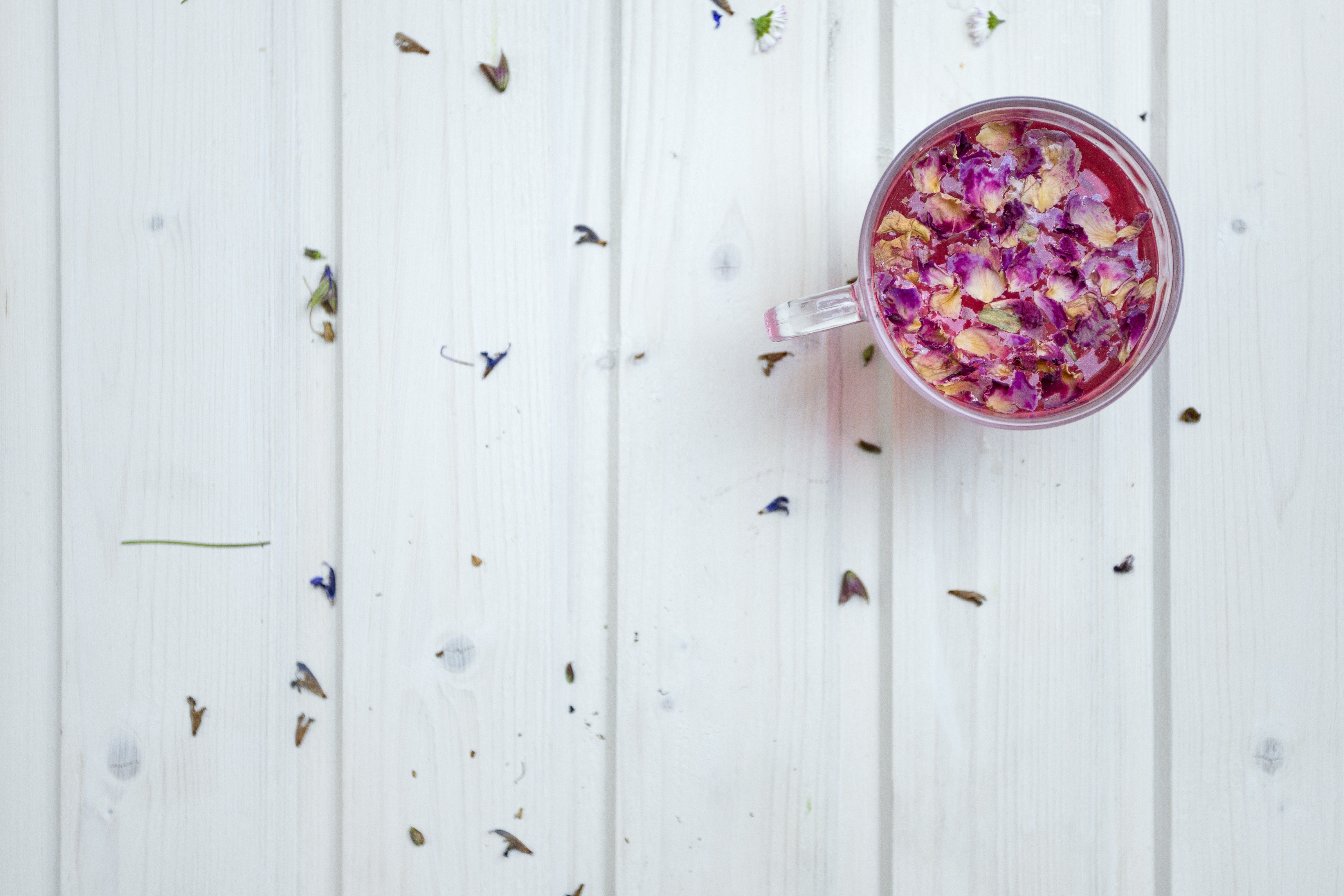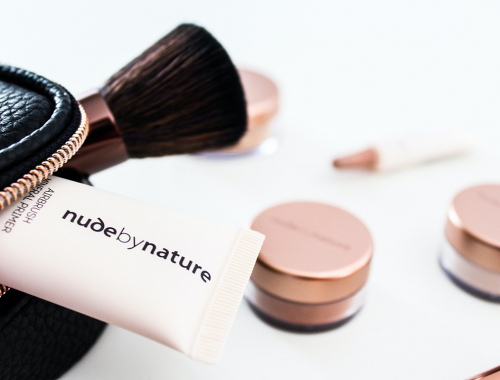The Strand Test
Before talking about what hair needs to look and feel healthy, let’s get a look at where your hair currently is. The strand test is easy: all you need is sopping wet hair. After a shower or bath, take a strand of fully wet hair in your fingers and stretch it away from your scalp and watch what happens.
Balanced Protein and Moisture
If the hair stretches about 30% longer then bounces back to its normal length, your hair has balanced levels of moisture and protein. Your current hair care regimen is working!
Low Moisture and/or High Protein
If the hair does not stretch very far and immediately breaks, it could be lacking moisture and/or have too much protein. Reduce the amount of protein in your hair products while simultaneously increase your use of hair moisturizers. This is the most common diagnosis as it is much easier to over-protein the hair than to over-hydrate it. Protein is not only contained in most conditioners and leave-in products, but is also added into hair color. Naturally curly hair is also prone to dehydration due to its unique structure that increases the rate of water loss from the strands.
Low Protein and/or High Moisture
If the hair stretches 30% or more without snapping, but does not bounce back to its original length, your hair has too much moisture and/or too little protein. It is actually pretty difficult to over-hydrate hair, but it can be done. The fix is simple: add more protein with one of the many protein-containing conditioners or leave-ins.
The Hair Trinity
Moisture
Moisture in hair lends elasticity to the strands so they can stretch without breaking, and contributes to a soft, touchable feel. Dehydrated hair is rough and coarse to touch, and may snag and break easily. Overly moisturized hair is limp and shapeless, and may feel simultaneously gummy and wispy (like cotton candy). Properly moisturized hair should stretch a bit when pulled but also return to its original length without snapping.
Protein
Proteins are the building blocks that strengthen hair, prevent breakage, and provide structure for hair to maintain style. Hair lacking in protein may feel flimsy and will not hold a curl or style. Hair with too much protein is brittle and will snap almost immediately when stretched. Balanced protein results in hair with a bit of volume and elasticity that bounces back easily to its raw state.
Slip
Often confused with moisture, slip is actually a separate factor that contributes to the feel of hair. While moisture can make hair soft, it does not necessarily make hair smooth. Imagine your hair is made of cotton balls: while the cotton itself is soft, the strands of cotton can still tangle or snag. Adding a slippery film to the hair’s outside cuticle keeps it smooth and free of tangles.
Ingredients
Humectants (Increase Moisture)
Also known as the “true” moisturizers, humectants improve the hydration (water content) of hair. Humectants contain hydrophilic molecules that utilize hydrogen bonds to attract and bind nearby water molecules which draws more moisture into the hair. Humectants by themselves attract water but do not create it—therefore all humectants need nearby water molecules to do their job. Pure humectant conditioners are hard to find, but Honeyskin Organics Advanced Conditioner is one of the few.
Because humectants need nearby water molecules, they are best used on sopping wet hair or on dry hair in a very humid environment (humid air contains water). A product high in humectants should not be placed on dry hair unless 1) the product also contains a lot of its own water to bind or 2) you live in a very humid environment which provides air moisture for the humectant to attract. Humectants + dry hair + dry air = dried out hair. The humectant will attract what little water is already in the hair strand and pull it out of the hair to bind to itself.
Examples
- Glycerin
- Aloe Vera
- Honey
- Propylene Glycol
- Panthenol
Emollients (Increase Protein, Maintain Moisture, and Increase Slip)
Emollients in hair care should fill in the cracks and gaps in the hair strand acting as a temporary filler in damaged sections of hair. Once the cracks are filled, additional emollient serves as a film over the hair which prevents water loss. Using emollients maintains moisture levels while increasing both slip and softness. Pure shea butter hair masks, such as Buena Skin 100% Pure Shea Butter, provide all of the benefits of emollients without side effects from conflicting ingredients.
The term “emollient” is technically a skin care term and its meaning becomes a bit confused when applied to hair. In skin care, emollients provide lipids or fatty acids that actually help the skin heal because the skin is a living organism. Hair, on the other hand, is dead and cannot repair itself. This means that many ingredients classified as emollients act only as occlusives to hair—sealing the hair but not repairing it.
When I use the term emollient when referring to hair, I refer only to ingredients that have a high probability of penetrating the hair strand. While the hair is dead, if we can get beneficial ingredients into the strand we may be able to improve the hair’s look and feel. Penetrating ingredients generally improve hair structure within the strand, which means that these emollients also indirectly increase protein in the hair.
Examples
- Coconut oil and capric / caprylic triglycerides
- Shea butter
- Babbasu oil
- Sunflower oil
- Ucuuba butter
- Argan oil
- Kokum butter
- Red palm oil or palm kernel oil
- Avocado oil
- Olive oil
Proteins (Increase Protein)
While proteins are technically emollients, they tend to increase the protein content (and thus, strength) of hair much faster than other emollients. They also tend to be a one-trick pony: increasing strength but nothing else. Using a pure protein product makes hair strong but not soft and pliable. For example, if I use the Aphogee 2-minute Keratin Reconstructor just twice in a week my hair will start snapping off due to the formula’s use of three intense proteins. Conversely, using the Garnier Whole Blends Nourishing Mask every day only mildly strengthens my hair, even though it contains multiple penetrating emollients (shea butter, avocado oil, and sunflower oil).
Examples
- Hydrolyzed wheat protein
- Silk amino acids
- Hydrolyzed keratin
- Collagen amino acids
- Hydrolyzed soy protein
Occlusives (Maintain Moisture and Increase Slip)
In skin care, most occlusives would be called emollients. To keep things clear for hair care specifically, I refer to all emollients with a low probability of entering the hair strand as occlusives. Occlusives seal off the hair which prevents water loss and provides a smooth and slippery texture to the outside of the hair strand. This often adds shine and gloss to the hair as well. A classic occlusive product is the Paul Mitchell Super Skinny Serum.
Occlusives are a double-edged sword when it comes to moisture. As most occlusives are hydrophilic (water repelling), they will seal the hair and prevent water from getting out but also prevent water molecules from getting in. A build-up of occlusives on the hair can actually dry out the hair because the emollient film repels new moisture.
Examples
- Silicones (dimethicone, amodimethicone, cyclomethicone, cyclopentasiloxane)
- Mineral oil
- Petrolatum
- Rice bran oil
- Jojoba oil




